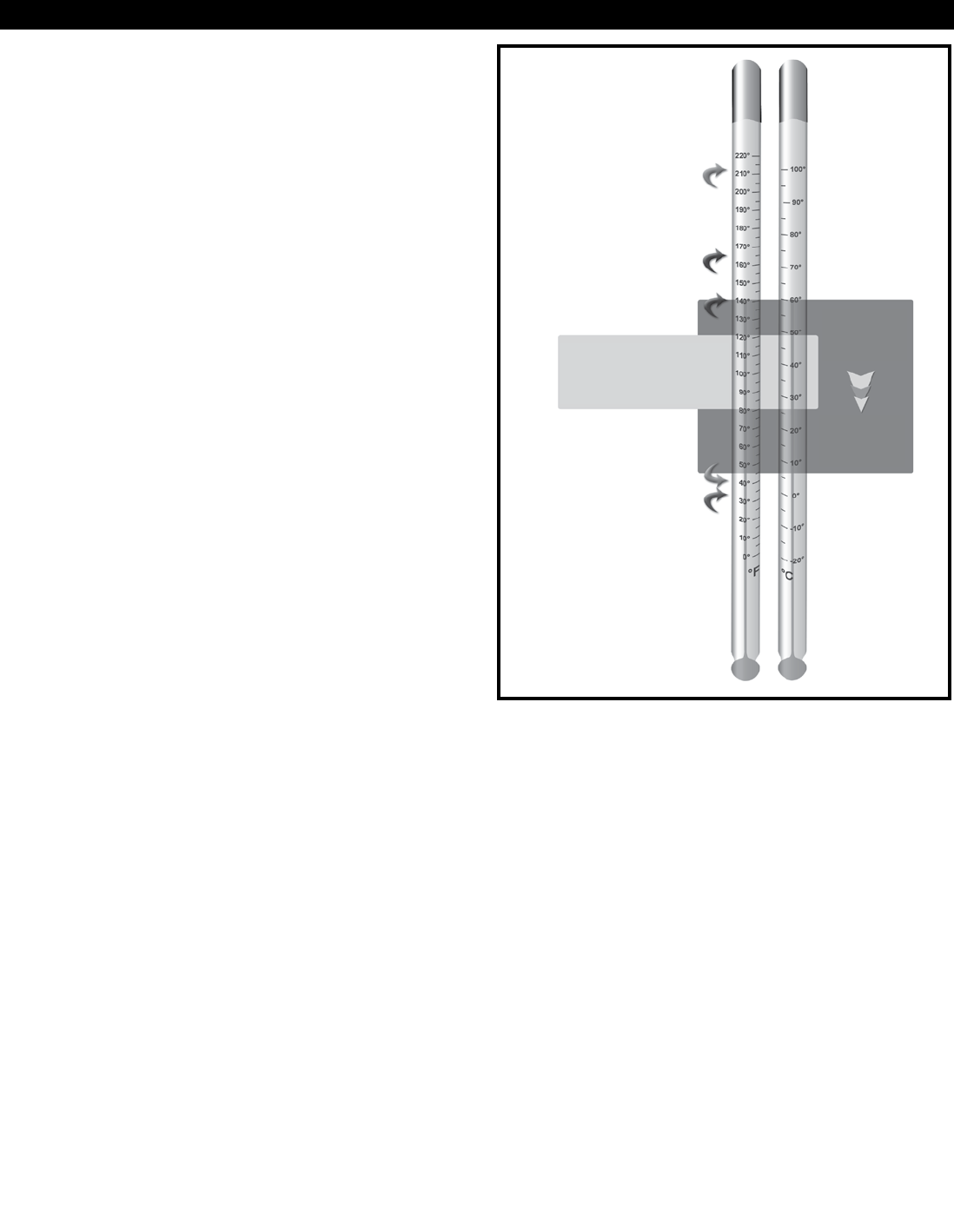Troubleshooting guide
Table Of Contents

coo kin g guideli nes - delu xe co ntr ol • 22
FOOD HOLDING AND SANITATION
FOOD HOLDING AND SANITATION
FOOD SAFETY GUIDELINES
Safe food handling practices to prevent food-borne
illness is of critical importance to the health and
safety of your customers. HACCP, an acronym for
Hazard Analysis (at) Critical Control Points, is a
quality control program of operating procedures to
assure food integrity, quality, and safety. Taking
steps necessary to augment food safety practices
are both cost effective and relatively simple. While
HACCP guidelines go far beyond the scope of
this booklet, additional information is available
by contacting the USDA/FDA Food-borne Illness
Education Information Center.
All heated food must be maintained at 140°F to
150°F (60°C to 65°C) after being heated. Foods
that have been heated followed by refrigerated
storage must be reheated to a minimum of 165°F
(74°C) to prevent bacteria growth.
• All stored food items must be covered and placed
in a cooler or freezer at a minimum height of
6-inches (152mm) above the floor.
• Employees serving food, preparing food, or washing
utensils must wear an effective hair covering.
• Employees must wash their hands before serving
or preparing food.
• Soap and towels must be provided at the hand-sink
which must only be used for washing hands.
• No smoking or use of tobacco products is allowed
in the food preparation or service area.
• All serving containers must be stored with food
contact surfaces covered or in the down position.
• All utensils must be washed in a three-
compartment sink and dipped in a final sanitation
rinse. A pH test kit must be used to check the
rinse water.
• Food preparation surfaces must not be used for
the storage of non-food items.
• All cold food must be stored at or below 40°F (4°C).
• Frozen foods must not be thawed at room
temperature nor in water. Use the cooler for
thawing and thaw foods slowly.
SUMMARY
In the United States, the Food and Drug Administration
has a published Food Code as a reference guide for the
prevention of food-borne illness in retail outlets such as
restaurants, institutions and grocery stores. Provisions
of this Food Code are compatible with the concept and
terminology of Hazard Analysis (at) Critical Control
Points (HACCP) and contains expanded provisions for
food safety. The FDA publication, along with local
codes, should be the final word with regard to all issues
regarding food safety and sanitation in the U.S. For more
information contact:
Center for Food Safety and Applied Nutrition
Food and Drug Administration
PHONE: 1-888-SAFEFOOD
www.foodsafety.gov
BOILING POINT OF
WATER 212°F (100°C)
MINIMUM INTERNAL PRODUCT
TEMPERATURE FOR REHEATING
(RETHERMALIZING) 165°F (74°C)
MINIMUM HOT FOOD HOLDING
TEMPERATURE 140°F (60°C)
COLD FOOD MAINTENANCE
BELOW 40°F (4°C)
FREEZING POINT
OF WATER 32°F (0°C)
CRITICAL DANGER ZONE
120°F TO 80°F (49° TO 27°C)
MAXIMUM BACTERIA GROWTH
DANGER
ZONE
140° TO 45°F
(60° TO 7°C)










